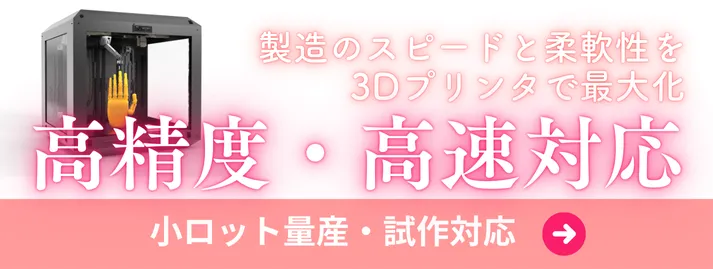- お役立ち記事
- Manufacturing Process of Automatic Curtain Rails and Improvement in Noise Reduction
月間76,176名の
製造業ご担当者様が閲覧しています*
*2025年3月31日現在のGoogle Analyticsのデータより

Manufacturing Process of Automatic Curtain Rails and Improvement in Noise Reduction

Curtains play an essential role in both homes and workplaces, blending functionality and aesthetics to create a comfortable environment.
Automatic curtain rails take this convenience a step further by allowing people to open and close curtains with minimal effort.
In this article, we will explore the manufacturing process of automatic curtain rails and discuss improvements in noise reduction technology.
目次
Materials and Components
The manufacturing process begins with selecting the right materials.
Automatic curtain rails are typically made of aluminum, plastic, or a combination of both.
Aluminum is favored for its lightweight yet sturdy nature, while plastic is often used for small, intricate parts.
Aluminum Extrusion
The primary structure of the curtain rail is usually made via aluminum extrusion.
In this process, aluminum billets are heated and forced through a die to form long, continuous profiles.
These profiles are then cut to the required lengths for the curtain rails.
Plastic Injection Molding
Various components, such as pulleys, gears, and brackets, are produced using plastic injection molding.
In this technique, plastic pellets are melted and injected into molds.
After cooling, the solidified parts are ejected from the molds and undergo trimming to remove any excess material.
Assembly Process
After the materials are prepared, the assembly process begins.
This stage involves putting together the aluminum rails, plastic components, and electronic parts.
Attaching the Motor
One of the crucial steps in the assembly process is attaching the motor to the rail system.
The motor drives the movement of the curtains by controlling the pulley system.
High-precision motors are used to ensure smooth and quiet operation.
Incorporating the Control System
Another critical component is the control system, which allows users to operate the curtains remotely.
This system can include sensors, remote controls, and even integration with smart home devices.
The electronic circuitry is carefully installed to ensure reliability and longevity.
Testing and Quality Control
Before the automatic curtain rails are packed and shipped, they undergo rigorous testing and quality control.
Functional Testing
Each unit is tested to ensure it operates smoothly.
This includes checking the motor functionality, the responsiveness of the control system, and the movement of the curtains along the rails.
Defective units are identified and either repaired or discarded.
Noise Testing
Noise levels are also measured during quality control.
Curtain rails that produce excessive noise can detract from the comfort of a room.
Thus, manufacturers strive to minimize noise through careful engineering and testing.
Noise Reduction Technology
One of the significant challenges in the production of automatic curtain rails is reducing the operational noise.
Thankfully, advancements in technology have led to significant improvements in this area.
Using Quieter Motors
A primary source of noise in automatic curtain rails is the motor.
Manufacturers are now using quieter brushless motors, which produce less noise due to the absence of brushes that cause friction.
Additionally, these motors are more durable and require less maintenance.
Sound-Absorbing Materials
Incorporating sound-absorbing materials into the design can significantly reduce noise.
Foam padding and rubber gaskets are often used around the motor and other moving parts to dampen vibrations.
This not only reduces noise but also contributes to the smooth operation of the entire system.
Precision Engineering
Precision engineering plays a key role in noise reduction.
Tighter tolerances in the production of parts lead to less friction and smoother movement.
For example, precision-milled gears and pulleys ensure that there are minimal disruptions during the operation.
Smooth Gliding Mechanisms
Enhancing the gliding mechanisms can also contribute to quieter operation.
Using high-quality ball bearings and lubricants ensures that the curtain moves effortlessly along the rail.
This approach reduces the noise associated with the physical movement of the curtain.
Conclusion
In summary, the manufacturing process of automatic curtain rails is intricate, involving several stages from material selection to assembly and testing.
The incorporation of advanced noise reduction technologies has significantly enhanced the user experience.
By using quieter motors, sound-absorbing materials, and precision engineering, manufacturers have been able to produce automatic curtain rails that operate smoothly and quietly.
As technology continues to advance, we can expect further improvements in both the functionality and noise reduction capabilities of automatic curtain rails.
This ensures that our living and working spaces remain comfortable and convenient, allowing us to enjoy the benefits of modern innovation.
 資料ダウンロード
資料ダウンロード
QCD管理受発注クラウド「newji」は、受発注部門で必要なQCD管理全てを備えた、現場特化型兼クラウド型の今世紀最高の受発注管理システムとなります。
 ユーザー登録
ユーザー登録
受発注業務の効率化だけでなく、システムを導入することで、コスト削減や製品・資材のステータス可視化のほか、属人化していた受発注情報の共有化による内部不正防止や統制にも役立ちます。
 NEWJI DX
NEWJI DX
製造業に特化したデジタルトランスフォーメーション(DX)の実現を目指す請負開発型のコンサルティングサービスです。AI、iPaaS、および先端の技術を駆使して、製造プロセスの効率化、業務効率化、チームワーク強化、コスト削減、品質向上を実現します。このサービスは、製造業の課題を深く理解し、それに対する最適なデジタルソリューションを提供することで、企業が持続的な成長とイノベーションを達成できるようサポートします。
 製造業ニュース解説
製造業ニュース解説
製造業、主に購買・調達部門にお勤めの方々に向けた情報を配信しております。
新任の方やベテランの方、管理職を対象とした幅広いコンテンツをご用意しております。
 お問い合わせ
お問い合わせ
コストダウンが利益に直結する術だと理解していても、なかなか前に進めることができない状況。そんな時は、newjiのコストダウン自動化機能で大きく利益貢献しよう!
(β版非公開)









